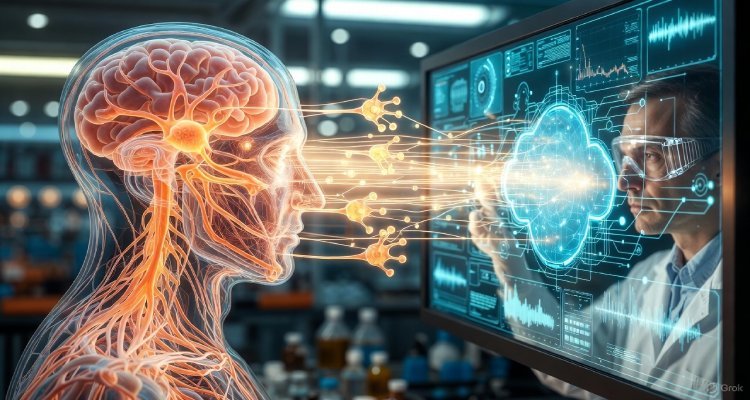AI Boom Defies Recession Fears, Reshapes U.S. Economy
Massive AI-driven investments in data centers and infrastructure are powering U.S. GDP growth, countering recession fears across two presidencies.
Introduction: The Recession That Wasn’t
For the second time in just three years, dire warnings of a looming U.S. recession have failed to materialize. Spanning two different presidential terms, economic gloom has once again been overshadowed by a powerful and somewhat unexpected force: the relentless expansion of artificial intelligence.
Context: From Hype to Hardware
Since OpenAI launched ChatGPT in late 2022, artificial intelligence has transformed from a promising technology into a capital-intensive economic engine. Even amid competitive threats from China’s DeepSeek or uncertainty around trade policies—especially those linked to former President Donald Trump’s tariff maneuvers—AI infrastructure spending has not only persisted, but surged.
This tech-fueled frenzy has grown beyond just surging stock prices in semiconductor firms. It’s now reshaping the physical and economic landscape of the country, driving a new industrial era defined by data center construction, energy demand, and hardware investment.
Main Developments: Capital Spending Reshapes the Map
The financial impact of AI isn’t theoretical—it’s showing up directly in the nation’s GDP data.
Jason Thomas, Chief Investment Strategist at Carlyle, describes the current wave of AI-related capital expenditures (capex) as a modern “re-industrialization” of corporate America. Companies are shifting away from intangible digital assets and are instead investing aggressively in tangible infrastructure: buildings, machinery, energy systems, and server architecture.
According to Thomas, spending related to AI infrastructure—ranging from GPUs and servers to power supplies and data centers—already makes up more than a third of projected second-quarter U.S. GDP growth. That’s a staggering contribution, especially with economists anticipating a 2.5% annualized GDP increase for the quarter.
This isn’t just speculation. Investment in physical data centers alone has quadrupled since 2020, helping to offset slumps in other sectors like residential and office construction. At the same time, capital spending by major U.S. clients of chipmaker Nvidia has grown 1.5 times faster than their revenues. Where once property, plant, and equipment made up just 20% of their book value, it now comprises around 70%.
Expert Insight: Big Bets, Bigger Borrowing
Morgan Stanley analysts Vishwanath Tirupattur and Vishwas Patkar have crunched the numbers and predict a massive $2.9 trillion will be spent globally on data centers through 2028. This includes $1.6 trillion on chips and servers, and another $1.3 trillion on real estate, construction, and ongoing maintenance.
To put that in perspective, this annual global investment would nearly match the $950 billion in capex spent by all S&P 500 companies in 2024. While some of the funds will come from company coffers, the analysts estimate that a $1.5 trillion gap will need to be covered through financing—likely involving a mix of bonds, loans, asset-backed securities, and private equity.
Their analysis suggests that investment in AI-related infrastructure will add 0.4 percentage points to U.S. GDP in both 2025 and 2026.
Impact: AI as an Economic Insulator
The real surprise isn’t just AI’s contribution to economic growth—it’s how much it has disrupted broader macroeconomic expectations. In a time when markets remain on edge over inflation, trade disputes, and geopolitical friction, AI has quietly become a buffer, dulling the sting of uncertainty.
As Wall Street gears up for another round of earnings from tech giants, analysts are watching closely to see whether AI’s boost is still accelerating or if the sector is approaching a plateau.
Despite the speculation, one thing is certain: the AI revolution isn’t confined to the cloud or confined to code. It’s driving concrete economic change—measured in steel, silicon, and surging power demands.
Conclusion: A Tech-Led Economic Redesign
Whether or not AI’s explosive economic contribution continues at this pace, its legacy is already visible. It has redefined corporate priorities, revived American manufacturing ambitions, and kept the economy buoyant at a time when many expected it to sink.
The question now is not whether AI can keep up this momentum—but how long it will serve as the engine of global economic resilience.
⚠️ (Disclaimer: This article is a journalistic rewrite based on publicly available data and expert commentary. Financial projections and analysis reflect the views of the original sources. Readers should conduct their own due diligence before making investment decisions.)
Also Read: Wall Street Steadies Ahead of Fed Meeting and Earnings Rush











